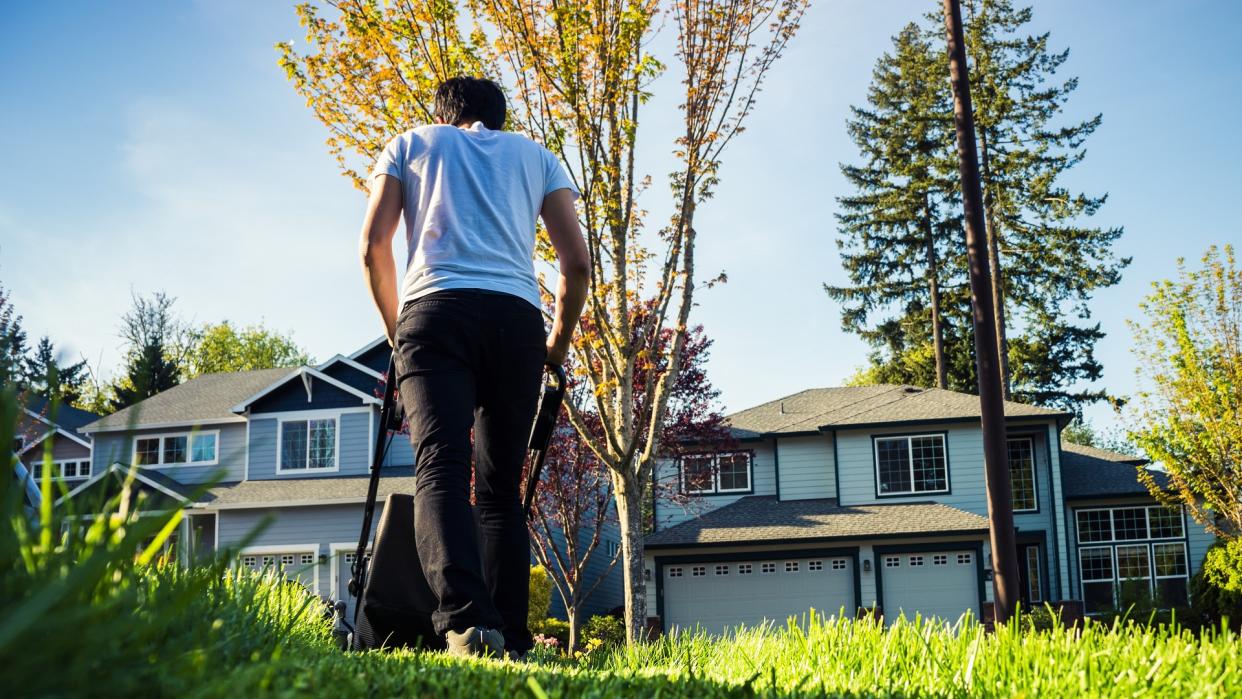6 Things You Need to Do When Budgeting for Seasonal Home Maintenance

As spring brings warmer weather, it’s a good time to get outside and tackle home repairs. Winter’s heavy rains, snow and high winds wreak havoc on your house for months. Spring brings an opportunity to fix any damage and also perform routine maintenance that will preserve your home’s value, keep it looking great and — potentially — avoid costlier emergencies down the line.
Check Out: Housing Market 2024: Home Prices Are Plummeting in 10 Formerly Overpriced Housing Markets
Read Next: 5 Genius Things All Wealthy People Do With Their Money
Here are six maintenance tips that can protect what is likely the biggest investment you’ll ever make, along with the average cost of each.
1. Clean Out Gutters
You may not think about the gutters on your roof — until something goes wrong and they get clogged, start leaking or even fall down. Clogged gutters can release rainwater and debris onto your roof, causing damage and leading to leaks.
A typical gutter cleaning costs anywhere from $80 to $250 for a single-story home, and between $150 and $400 for a two-story or larger house, according to LeafFilter.com.
You might pay a price based on the linear foot of gutters, according to the website. That price can range from $3 to $7 per foot. So, if you have 125 feet of gutters, a professional cleaning can cost between $375 and $875, depending on your region, roof pitch and how complicated it is.
2. Lawn Maintenance
Have you kept up with your lawn maintenance year-round? If not, it’s time to being mowing your grass. However, the experts say if you don’t have snow on the ground, you should mow the lawn year-round.
“Keep mowing,” said Joe Raboine, director of residential hardscapes with Belgard. “Many homeowners assign a final date for mowing and that is a big mistake. The cool season grasses that are the mainstay of lawns like bluegrass and fescue prefer cooler climates and will continue to grow at a slow pace until the ground freezes. It is beneficial to maintain a 10-14 day mowing schedule until then.”
If you don’t want to mow your lawn yourself, you can hire a landscaping company or find an individual to mow your grass on a site like Jobber or TaskRabbit. Expect to pay between $50 and $250 or between $25 and $60 per hour if you hire a person, according to Jobber.com. Those costs increase if you also want maintenance like edging or pruning bushes.
3. Wash the Exterior
Dusty summer months can make your home’s exterior look dirty and worn-down, said Adriana Aziz, operations manager of MaidForYou, a premium house cleaning company. “Not only does a quick pressure wash remove dirt and dust that can enter your home, it also improves the aesthetic appearance of the exterior of your home,” she pointed out.
According to Angi.com, the average cost to pressure wash a house is $308, but most homeowners will pay between $196 and $420, depending on the size of the home and their region.
4. Repaint the Exterior
Power washing your home is an easy way to make vinyl siding look like new. But if you have painted shingles on your home, you’ll need to invest a bit more time and money to get a fresh look. The upside of painting your home’s exterior is that you can choose any color you’d like. Just make sure you’re happy with the decision, since painting isn’t cheap.
The average cost of painting the exterior of a house is $3,000, according to Forbes, although prices can go as high as $13,000, depending on the size of the house, the prep work required, and the region where you live.
5. Get a Pest Inspection
If you haven’t done a pest inspection since you first bought your house, it’s probably time, said Mike Malone, pest and termite expert with Arrow Exterminators.
“Many homeowners believe that termites don’t exist simply because they can’t see them,” he said. “However this is not the case as termites are most often present in a home well before they start to swarm. But once it begins, the damage occurs quickly.”
In addition to an inspection, he recommended homeowners take the following steps to prevent termites:
Eliminate moisture around foundations.
Do not stack firewood or lumber near home.
Remove old tree stumps in the yard.
Keep tree branches and shrubbery well-trimmed and away from the house, which will also help with inspections and finding termite infestations
Reduce humidity in crawl spaces with proper ventilation.
Have your home inspected annually by a licensed pest professional specializing in termite control.
You may be able to find reputable companies who perform termite inspections for free, although the average cost is $150, according to Forbes.
6. Seal Cracks in Driveway or Pathways
Check your driveway and paths for cracks and reseal them, said Raf Howery, CEO and founder of Kukun, an AI-powered property technology platform for homeowners and real estate investors.
It’s a good idea to reseal cracks before winter. “Reseal the cracks before winter sets in or else water from snow may freeze and expand in the cracks-causing more damage,” Howery said.
But if your driveway experienced damage during the harsh winter months, take care of cracks before spring and summer. A newly sealed driveway looks more attractive and also reduces the risk of guests tripping and falling if you plan to entertain during the summer.
Learn More: 7 Ways People Destroy the Value of Their Homes, According to a Real Estate Agent
The average cost to seal your driveway is $490, according to Forbes, although prices range from $160 up to $1,000, depending on the size of your driveway, type of sealant, and the extent of damage that needs to be repaired.
More From GOBankingRates
This article originally appeared on GOBankingRates.com: 6 Things You Need to Do When Budgeting for Seasonal Home Maintenance
